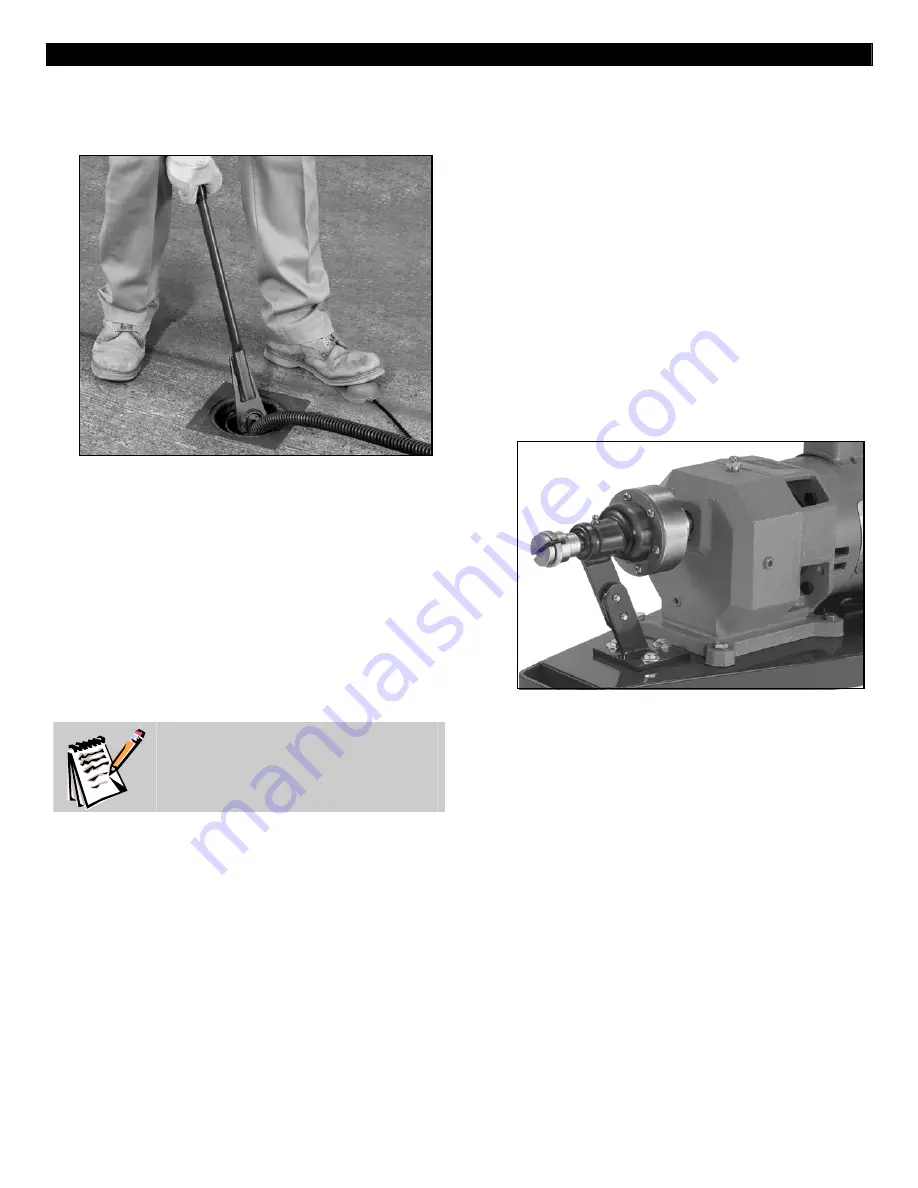
Model 88™
pedal, and the cable’s rotation against the
Cable Feeding Tool will work the section
through the trap. Never try to force a cable
through a P-trap smaller than 4” in diameter.
9. If the motor begins to slow down or the clutch
starts to slip, you have probably reached the
stoppage. Stop the machine and switch motor
in reverse. Run machine for a few seconds.
Then stop and switch to forward rotation.
Repeat this procedure until water starts to flow.
This is often the best way to work through the
stoppage.
10. Run the machine in reverse to pull sections out
of the line. After the line is opened with a
Spearhead or 2” U-Cutter, follow with larger
blades which scrape the inside edges of the
pipe, assuring a real cleaning job.
Hint:
It's often helpful to have a small
stream of water running in the line to
wash the cuttings away while the
machine is in operation and after.
FOLDING HANDLE
To make the Hot-Rodder more compact, it is
equipped with a folding handle. By lifting up the
sliding collars on each side of the handle, you can
fold it forward. When the handle is raised, the
collars will drop into position, locking the handle in
place.
SAFETY CLUTCH
The safety clutch is located between the motor and
the Cable Drive Coupler. It is designed to protect
your cables from breakage and is factory preset to
slip at 100 in. lbs. of torque. Under normal usage
of your machine, no adjustments need to be made
to the clutch. If you find it necessary to change the
clutch tension, the following procedure should be
used:
1. Remove the clutch cover and loosen the screw
in the large hex nut on the front of the clutch.
Turn the nut in to increase tension and out to
reduce it. Then tighten the screw.
2. If you do not intend to change the tension on
the clutch very often, you can fold over one of
the metal tabs on the washer between the nut
and the body of the clutch so that it presses
firmly on the hex nut. You can, of course, alter
the pressure on the clutch at a later date by
bending the tab back up, adjusting the nut, and
bending a different tab against the nut.
3. Remember that the clutch is put on the machine
to protect your cables! Therefore, do not
tighten to the point where sections will be
damaged before the clutch slips.
GEAR REDUCER
Model 88 gear reducers are filled with lubricant to
the proper level before leaving the factory. Should
it become necessary to remove the lubricant in the
field, the following steps should be followed for
refilling:
1. Remove the Vent/Fill plug at the top of the gear
reducer.
2. Remove the Level plug at the middle of the side
of gear reducer.
3. Use a funnel or other device to add lubricant
until it appears at the side opening (Capacity:
1.25 pints).
MAINTENANCE
To keep your machine operating smoothly, it is
essential that all bearings and bushings be
lubricated. Oiling moving parts is particularly
important where machine comes in contact with
sand, grit, and other abrasive material.
6














